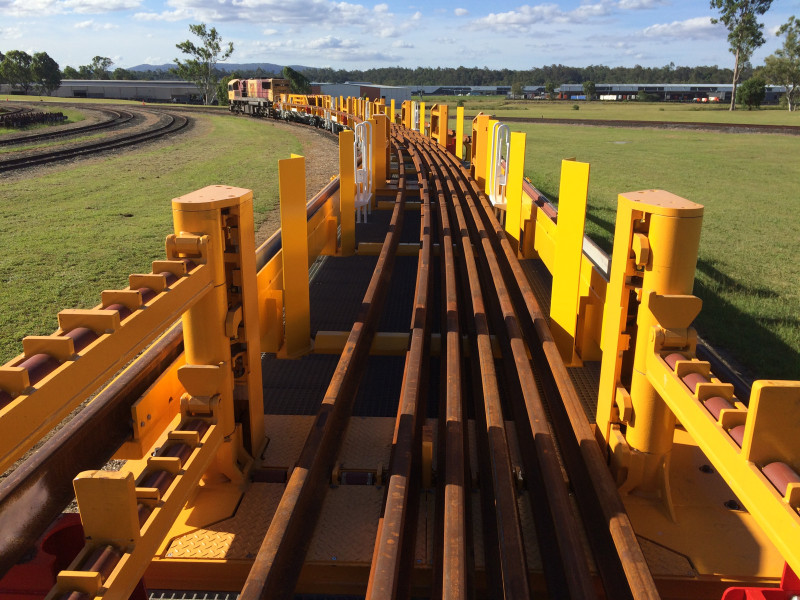Two automated rail delivery and recovery trains for Australia.
Australian Rail Track Corporation Ltd (ARTC) has ordered from Robel Bahnbaumaschinen GbmH two ROREXS rail exchange systems, one for the delivery of 50 rails and one for the delivery and recovery of 32 rails of 165 m length each.

The rail manipulators are center part of the two Robel rail exchange systems ordered by the Australian Track Corporation
© ROBEL
The project will be delivered by Robel, working in close collaboration with the Australian based wagon manufacturer Rail First Asset Management (RFAM). RFAM are providing 36 specially adapted container flat wagons onto which Robel is going to install the specialist on board equipment.
For this project, Robel introduces the latest technology in rail clamping, roller support gates and chute system, which integrates full automation and remote control. This eliminates working at height and close proximity to moving rail and increases production rates whilst maintaining optimum rail condition at all times during the process.
“We are proud to be part of this tripartite agreement with ARTC and Rail First. By introducing our latest technology for rail delivery and recovery, we aim to support ARTC optimize safety, efficiency and quality in the management of rail handling across the Australian network.”

The ROREXS systems will be deployed by ARTS for the delivery of 50 rails and the delivery and recovery of 32 rails of 165 m length each
© ROBEL
“Re-railing is a critical activity delivering safety and reliability outcomes on our rail network. The proposed procurement of new rail rakes from Robel and Rail First provides value for money, continuity of supply and critically offers the safest available solution to support the distribution of rail required for ARTC’s sustaining rerailing program.”
The new transport systems will start delivery of new rail from Bathurst and Port Augusta Rail welding depots and scrap rail recovery throughout the 8,500 km ARTC standard gauge network in spring 2025.
More about Robel Rail Exchange Systems
This article was originally published by ROBEL.
